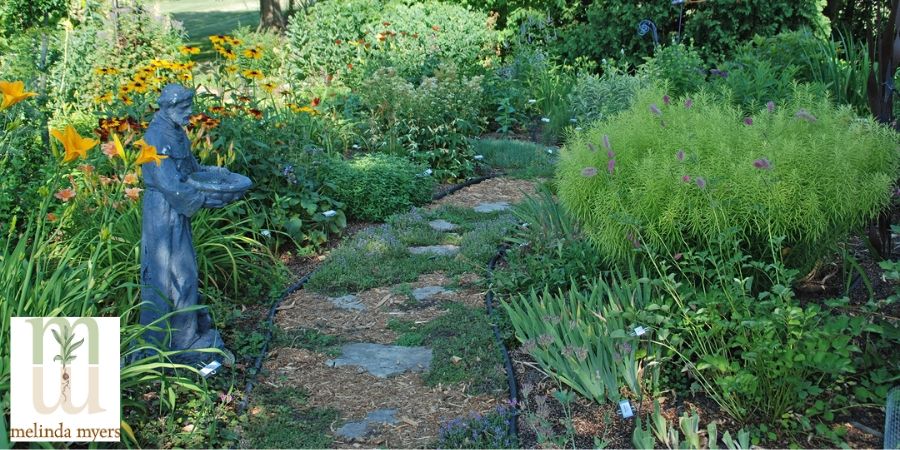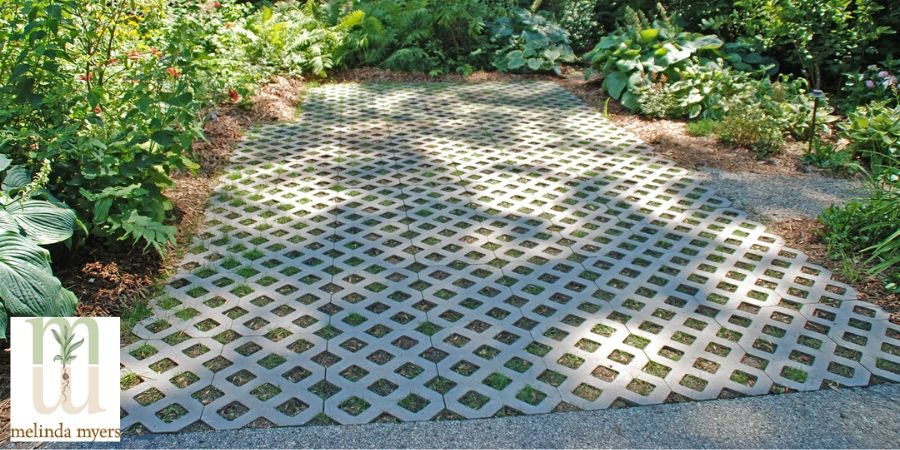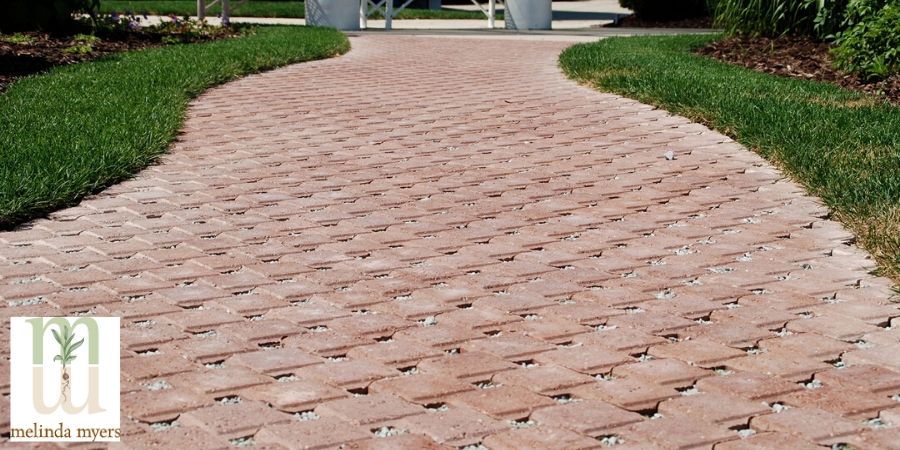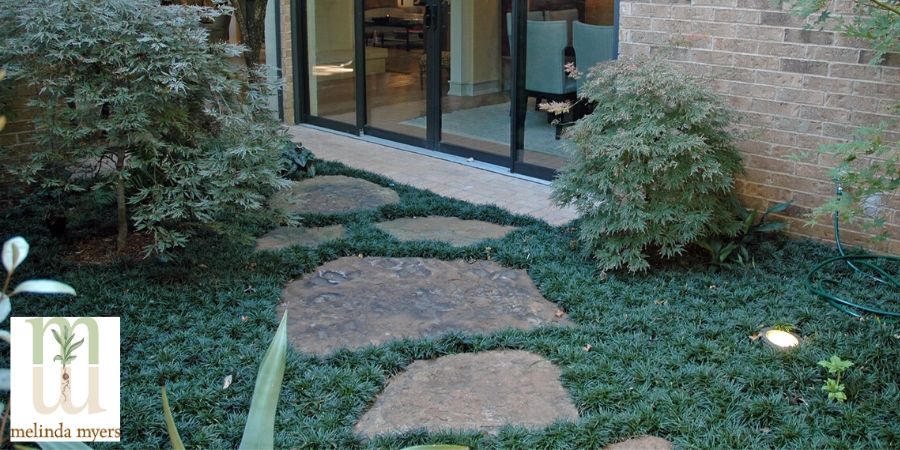Permeable Walks and Drives for Home Landscapes
- horticulturist and gardening expertJune 13, 2020
Walks, drives and patios are integral parts of our landscapes. These hardscapes connect the various landscape elements, provide solid defined spaces for entertainment, and a place to park our vehicles. When constructed of impervious surfaces they can also contribute to the risk of flooding and water pollution. Consider permeable pavement when planning hardscape additions or replacements. These types of materials allow water to penetrate their surfaces in to the soil below, reducing the risk of pollutant-laden water running off into nearby storm sewers or waterways.
Yes, permeable pavement is typically more expensive than traditional hard surfaces but when installed properly can last as long if not longer than traditional materials and can enhance the value of your property. In some situations near lakes and waterways they may be the only option for adding such features to your landscape.

Porous Pathway Through the Garden
When selecting a permeable option consider the aesthetics, durability, and maintenance as well as the cost. These are long term investments that have an important function, aesthetic value and impact on water management on your property.
Asphalt is a common driveway surface. Porous asphalt is a permeable option and can be used in the same manner as traditional asphalt for your driveway. It looks similar to traditional asphalt but the small aggregates are left out of the mix allowing water to pass through. Its permeable nature also helps reduce the need for de-icing in colder regions.
Pervious concrete pavement also looks similar to its traditional counterpart but contains minimal or no sand. The single sized aggregates in pervious concrete allow the water to pass through. It is often used for driveways, patios, and walks.
Permeable pavers are a system of interlocking blocks or pavers designed to fit together with spaces in between. These spaces are filled with gravel or sand that allow water to pass through. These are used for drives, walkways, patios and parking lots.

Open Celled Paving Grids
Open celled paving grids have concrete or strong plastic open framework that is filled with gravel, sand or a growing mix planted with grass. It can take time for the grass to fill in to create a more comfortable walking surface on grass filled grids. These systems are typically used for patios, walkways, drives and other low traffic situations.
Although the surface material of permeable pavement materials varies they are generally built on a bed of gravel. As rainwater passes through the permeable surface it fills the spaces between the gravel in the bed below. The captured water slowly seeps into the soil where it eventually enters the groundwater. In some cases, where the soil can’t absorb the water, an underground drain is included. Even though the water is being directed away from the property it delays the water’s release. This helps to avoid overloads on storm water management systems.
For these types of projects look for a qualified contractor with experience installing such systems. This is a large investment you do not want to repair or replace in the near future. Do your research first to make sure you end up with the best system to meets your needs and one that complements your landscape design.
Most companies selling these products and services have great examples of past installations on their websites. These can help inspire potential applications and designs for your landscape. And when selecting a contractor it is always nice to see the projects they have installed for others and check their references.

Permeable Pathway at Wisconsin State Fair
We installed a permeable walkway at WE Energies Energy Park at the Wisconsin State Fair in 2010. The original grass pathway between gardens was totally destroyed each year after more than 120, 000 State Fair visitors wandered through to view the gardens. To avoid adding more hard surfaces to the fair grounds we opted for a permeable paved walkway. An experienced contractor installed the walkway and it looks as good today as when it was constructed.
Not only does this permeable paved walkway look good, it helps manage storm water in our garden area. The permeable pavers along with mulched garden beds, a rain garden and rain barrels capture and keep water in Energy Park and out of the storm sewer.
Since the goal of these durable yet permeable surfaces is to direct water through and to the soil below siting is important. Permeable paved areas work best on relatively flat surfaces with less than a 5% slope. When installed on steep slopes they can experience ponding and the system can become oversaturated and unable to manage the water effectively defeating the purpose of the installation.
You’ll want to avoid high water tables, poorly drained sites, septic systems, wellheads and underground utilities. A qualified contractor can help you with proper siting, design and any needed permits.
Permeable surfaces like any aspect of a landscape do need regular maintenance. The key to their effectiveness is keeping the permeability intact. Sweep off leaves and debris as soon as possible. Plant debris and soil can filter into the voids and impede water penetration.
Power vacuum once or twice a year to prevent clogging. Replenish the material used to fill spaces in the interlocking permeable pavers as needed. Use the same joint material that was used in the original installation.
Do not use sand for ice control or stockpile sand, salt or snow that contains sand and salt on these permeable paved areas. These materials can clog the openings and prevent water penetrating the surface. Use a rubber tipped shovel or plow blade to avoid damage or lift the plow one inch above the surface.
Don’t overlook the impact on water quality you can make with smaller hardscape projects in your landscape. Steppers set among groundcovers, pea gravel, crushed shells and wood mulch are permeable easy to install options for more natural pathways in the landscape. Select materials suitable for your climate, function and landscape design. And if year round access is needed; is it easy and even possible to manage snow and ice removal.

Steppers Through Your Landscape
Flagstone and steppers interplanted with a perennial groundcover or grass can direct foot traffic through your landscape or provide easy access within a large garden bed. Make sure you are able to easily maintain the plants and the hard surfaces provide a stable and safe walking surface when access is needed.
Pea gravel provides a more refined look and is easier on bare feet than coarser irregularly shaped gravel. The small stones can get lodged in the soles of shoes and the walks will need regular raking to remove dips created by wheelbarrows or small children dragging their feet through the gravel.
Gardeners in coastal regions often employ crushed shells. This practice originated in Colonial times when gardeners recycled the discarded shells of oysters and other shellfish for this purpose. The rough surface is not barefoot friendly or conducive to bikes, and other smooth surface toys and activities.
Wood mulch is often used for garden pathways and trails. A 3 or 4 inch layer helps suppress weeds and provides a suitable walking surface. After a few years the wood mulch will break down and additional mulch is needed. Skip placing landscape fabric under wood mulch. As the wood mulch breaks down it creates wonderful compost for weed to grow and the surrounding grass to move in. These unwanted plants send their roots through the landscape fabric making it difficult to remove.
Consider permeable pavement when planning changes and additions to your landscape. Your drive, walk or patio project may seem insignificant to the larger stormwater and water quality challenges. But when we add together everyone’s hardscapes in a community the impact is significant.

